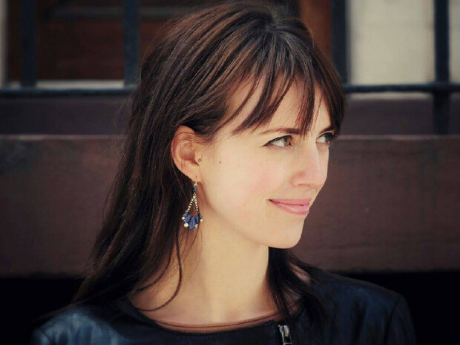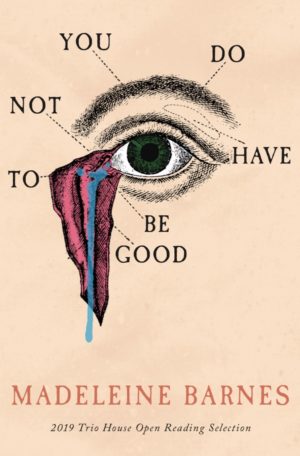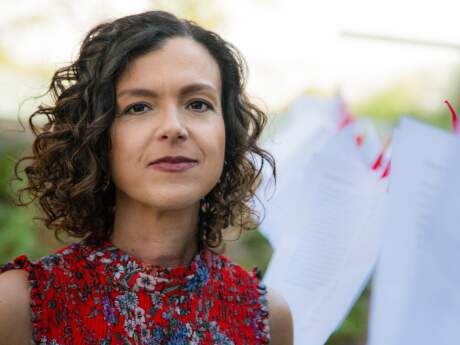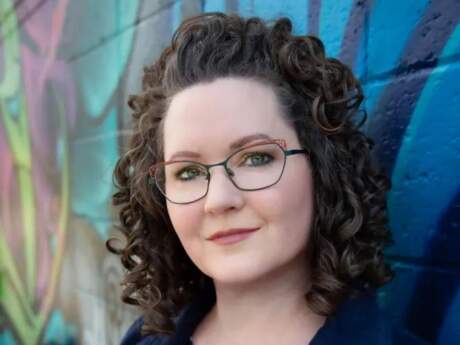In Their Own Words
Madeleine Barnes on “Some Answers I Wrote on a Long Term Disability Questionnaire”

Are your illnesses, injuries, or conditions related to your work in any way?
I got caught up in the destructive gravity of Sagittarius A* and paid the price.
Are you still unable to work because of your illnesses, injuries, or conditions?
If an object is moving toward us, its spectral lines shift to shorter wavelengths;
if it’s moving away the lines swing to longer wavelengths.
The higher velocity, the greater the shift.
Have you filed, or do you intend to file, for any other public disability benefits?
This could happen if the ejected stars came from a stellar disk
surrounding the supermassive black hole.
When do you believe your condition(s) became severe enough to keep you from working
(even if you have never worked)?
We do not have a complete survey of the entire sky. However,
theorists believe that the Milky Way is surrounded by a triaxial
[football-shaped] distribution of dark matter.
You may use this space for any explanation. If you need more space, attach a separate sheet.
If unknown, check “unknown.”
How much the trajectories deviate, and in what direction they do this,
depend on the shape and orientation of the dark matter halo.
I have been here so many times before.
From YOU DO NOT HAVE TO BE GOOD (Trio House Press’ Open Reading Selection, 2020). All rights reserved. Reprinted with the permission of the author.
This poem had its genesis when I was experimenting with poetry and collage, juxtaposing language from long-term disability and Social Security Disability Insurance application forms with text and images from astronomy magazines. As a writer and visual artist, collage has always served as a joyful medium that fuses my love of language with the visual, and reinforces a vital sense of play. I think of what scholar and painter William C. Seitz wrote of collage and poetry for “The Art of Assemblage,” a retrospective exhibition at the MoMA: “The poet’s most important tool is the metaphor—‘the joining of two things which are different.’” When I assembled this poem, I was experiencing a moment of futility, feeling overwhelmed by the dense and intrusive forms with no way to express the unsayable. So, I turned to art and space. Seitz reminds us that Apollinaire and the futurists said that art could be composed of any elements whatsoever: “materials noble or looked down upon, verbal clichés or clichés of old magazines, bromides, public slogans, refuse, etc.—these incongruous elements are transformed as soon as they take place in a newly created ensemble.” Inspired by artists like Tristan Tzara, John Ashbery, and Wangehchi Mutu, I pulled from the materials in my environment and began to address topics like identity and disability.
My cousin is an astronaut who is currently in space; a reverence for space runs in the family. Collage gave me a way to further explore the complexity, mystery, and impersonality of space in relation to illness and disability. This became a major theme in my first book. I love astronomical maps and how humans relied on them to contain knowledge of the universe. In them, I recognize the language of wonderment, chaos, and order. Cutting them up felt like a nod to the unknowable. Between the fragmentation of space images and the rearrangement of questions about my ability to be useful to capitalism, I found a way to embrace crises and cataclysms within and around me. The materiality of language can provide creative relief; collage offers a means to playfully incorporate and reconstruct reality.
In seeing the forms, which were not intended as art materials, disintegrated and transformed into picture-poems, I was able to lay claim to my experiences and examine the ableist messages about productivity and value that were ingrained in me. What makes a person “useful?” What happened to me felt arbitrary, and when making a collage you have to embrace the arbitrary. The bit of language from the SSDI form that still stands out to me is, “If unknown, check unknown.” How can anyone do anything other than “check unknown?” In tearing up and weaving together multiple source materials, I connected with my expressive power while still remaining aware of fragility inherent in the human ability to construct and destroy. As I fit together scraps and pieces, I watched the forms become space debris. In this effacement I found a place to start over.



